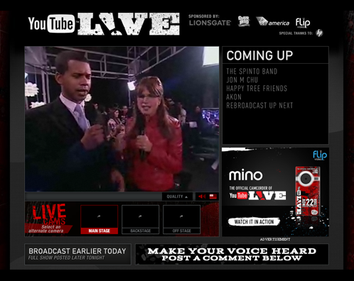By Bern Rexer
<<< UPDATE >>> here are the latest YouTube Live Encoder settings.
YouTube has made notable changes to their recommended live encoding settings. Particularly with the video bitrate increase for each of the four stream resolutions of 240p, 360p, 480p, and 720p - but also adding a 1080p live streaming resolution. These resolutions can be selected by the viewer from the quality cog adjustment on the bottom right of the YouTube player.
 |
YouTube's addition of a New Platform suggests encoding a single 6Mbps stream which their media servers then transcode to the lower bitrate streams.
|
The bitrates have increased considerably as shown from charts below of the old and new suggestions.
240p increases from 300Kbps to 500Kbps
360p increases from 600Kbps to 1000Kbps
480p increases from 1000Kbps to 2000Kbps
720p increases from 2400Kbps to 4000Kbps
OLD recommendations:
 |
| OLD encoder settings for YouTube live streaming published by YouTube |
NEW recommendations:
 |
| NEW encoder settings for YouTube live streaming published by YouTube* |
Most YouTube accounts do not have the ability to stream live. Those that are enabled may only have a basic feature of the streaming to a single bitrate of 360p. And some have the enhanced live streaming feature to stream to all four bitrates. Furthermore, YouTube has added a 'New Platform' for live streaming which transcodes a single higher bitrate stream to the lower bitrates.
 |
| YouTube live streaming Old and New Platform* |
Transcoding a single highest bit rate stream down to the lower bit rates and to mobile devices is a big step forward for YouTube live streaming. A video on the ytliveops YouTube channel discusses transcoding and the new platform.
*Published from the YouTube Live Streaming Guide 3/8/2013
<<<<<<<<<<<<<<<<<<<<<<UPDATE>>>>>>>>>>>>>>>>>>>>>>>>>>>
YouTube now has updated their encoding suggestions to included a recommended bitrate. This is great news as it shows their is flexibility with encoding bitrate. More testing will determine how the YouTube transcoders handle dynamic bitrates which is offered by many encoders.
 |
| YouTube Live Recommended Encoding Bitrates |
